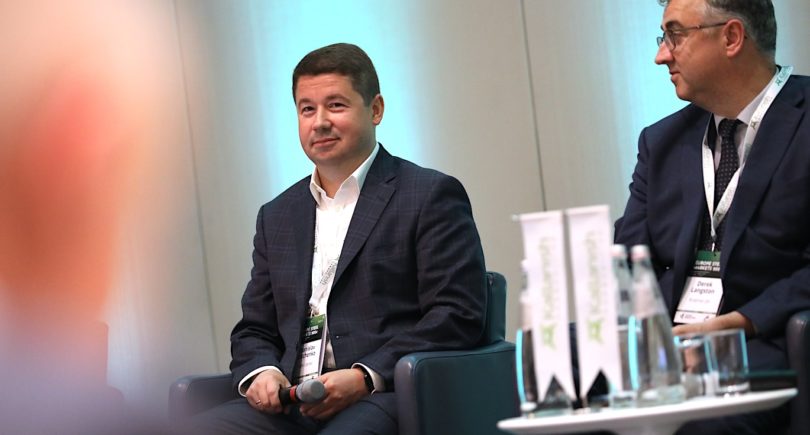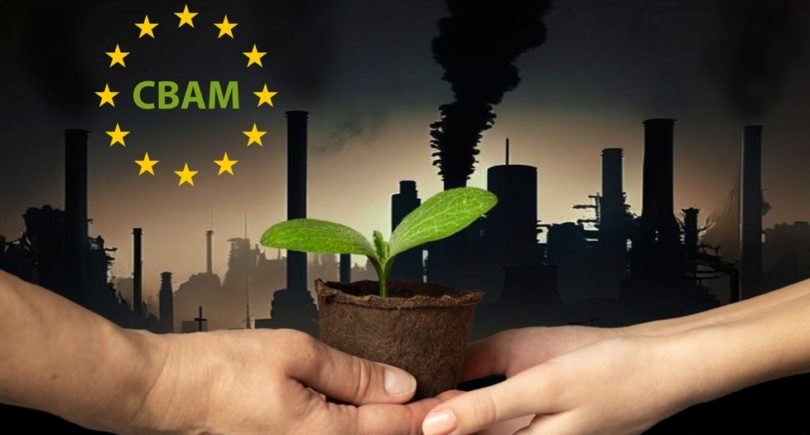
Opinions Green steel CBAM 1252 21 May 2025
Work on this issue will continue in the coming months
At the beginning of the full-scale war, in the face of forced shortages of many types of products, a massive inflow of imports helped the country and the economy greatly. Other countries, such as the European Union, the United States, and the United Kingdom, opened their markets, which also helped Ukraine survive the extremely difficult years of 2022-2023. But now, international partners have begun to restrict access to their markets for Ukrainian exports.
Taras Kachka, Deputy Minister of Economy and Trade Representative of Ukraine, spoke about his vision of the situation at the conference “Trade Wars: The Art of Defense”. GMK Center summarizes the main points of his speech.
Trade relations between Ukraine and the EU
On June 6, Ukraine will return to the free trade regime enshrined in the Association Agreement. Until then, we have been subject to the EU’s autonomous trade measures, which liberalized the conditions for Ukrainian goods to enter the European market. Returning to the free trade regime is a good option, as we have not had and will not have any duties on industrial goods. The same is true for most agricultural products.
In 2024, the European Commission made a reservation that there would be no extension of autonomous trade measures in 2025, and promised to review Article 29 of the Association Agreement to increase the access of Ukrainian goods to the EU market and European goods to the Ukrainian market. Instead, we have slowed down a bit with Article 29 due to a number of external circumstances, but I hope that we will find a solution quickly enough.
We will make every effort to ensure that after June 6 there will be no actual changes other than legal ones, at least while we agree on new parameters for liberalizing trade in goods that have not been fully liberalized. However, it is obvious that the situation is far from being as optimistic as in other areas of cooperation with the EU.
Our approach is to leave the trade conditions as they are now, perhaps even freer, but controlled. We are working quite constructively with the European Commission, but it is obvious that this will be a comprehensive solution to all trade issues.
We already have an example of metallurgy, in respect of which the EU has actually approved a decision that Ukraine will not be subject to trade defense measures. Ukrainian metallurgy has already become more understandable for European metallurgy – more integration and stable supplies.
Ukrainian agribusiness is also highly integrated with European business. We are one of the main suppliers of corn to the European Union, and therefore Ukraine is a feed base for European livestock. On the other hand, European suppliers, particularly in the poultry segment, are deeply integrated into the Ukrainian market: 100% of hatching material comes from the EU. All farmers in Europe will benefit from the integration of Ukrainian agriculture into the EU internal market, although they are currently very wary of imports of our agricultural products.
US trade duties on Ukraine
The issue of the elimination of duties is on the agenda. We will soon have a conversation with Jamison Greer, the US Trade Representative to Ukraine. Another thing is that now the US tariffs and the new approach to them are a new reality.
It should be borne in mind that some of the duties are set by the US Congress, not just the executive branch, which complicates the process of their abolition. The situation is also complicated by the new US approach to tariff policy, which involves asymmetric removal of tariffs only from certain countries or products, as was the case, for example, in the recent agreement with the UK.
It is important for us to remove duties on steel products – 25% on steel and 10% on aluminium. It is quite possible that we will achieve this decision, although I will not promise anything, because we are only at the beginning of the negotiation process. Our team was previously focused only on the resource agreement with the United States and the creation of a corresponding fund.
President Volodymyr Zelenskyy has already approached Donald Trump with a proposal to create a free trade zone with the United States. This, accordingly, will be the next stage of our conversations. We are interested in this, despite the fact that the United States is not our main trading partner. We are interested in free trade agreements with all the G7 countries (we already have agreements with the EU, the UK, and Canada), but we also need the US and Japan.
More and more Ukrainian producers are realizing that it is better to build their export strategy with a focus on developed markets, where quality requirements are higher, which, accordingly, creates more added value and profitability. From this perspective, it is important for us to focus on the possibility of exporting more to the US and having a corresponding free trade agreement.
Is there a reason for this? I think that the creation of the fund creates grounds for this, because it is possible to fully realize its idea if we have a framework for work also within the framework of a free trade agreement, which not only regulates tariffs, but also other rules – transparency, predictability of the regulatory environment, etc.
Application of CBAM to Ukraine
It took us a long time to figure out who, how, and to whom should address the European Commission. We have been engaged in a dialog with the European Commission for quite some time, trying to understand how it should work. Therefore, we are already moving into an active phase of work on an exception for the implementation of the Border Carbon Adjustment Mechanism (CBAM) for Ukraine.
The government is currently preparing official requests to the European Commission to grant an exception for Ukraine in general and for electricity exports separately. Work on this issue will continue in the coming months.





